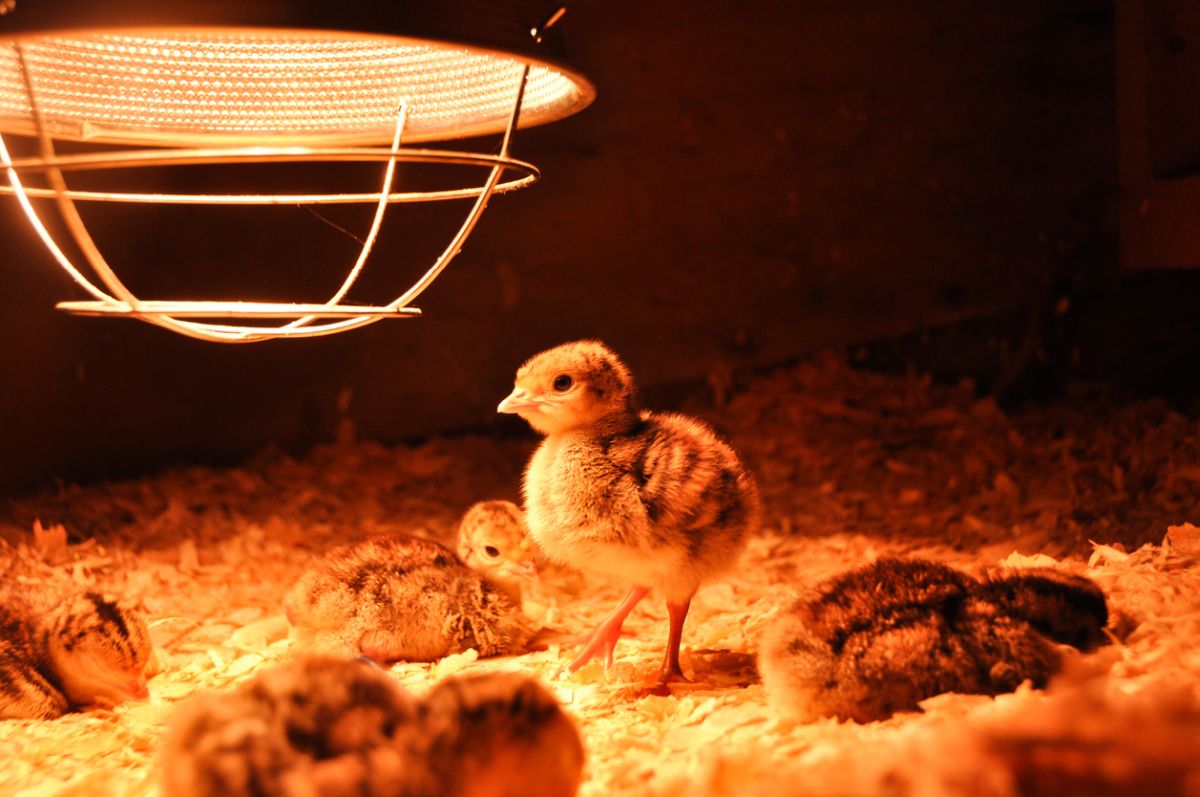If you’re raising hens and roosters as a way to get more chicks, then you’ll need a chicken brooder. While some animals can raise their young alone, chicks will be safest if you help the hens care for them or care for them yourself.
You can purchase your own brooder for chicks or you can create a homemade chicken brooder. So, let’s look at what it is, how to make one, and why you might need it.
What is a Chicken Brooder?
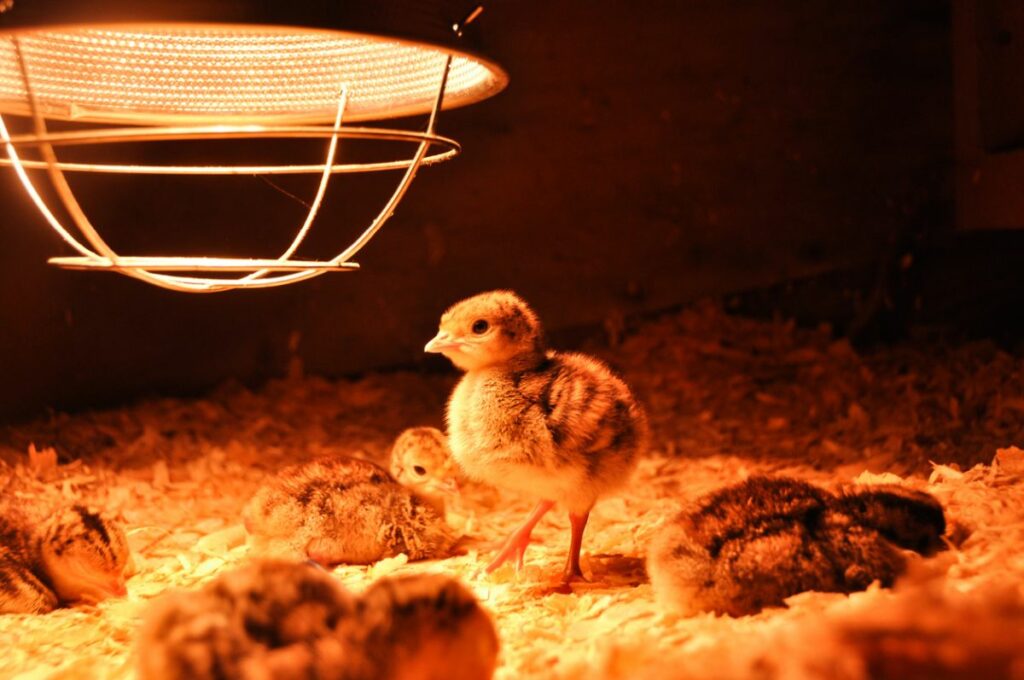
A chicken brooder is a safe, warm environment for young chicks. It gives them the comfort and protection they would normally get from a mother hen. Chicks spend the first few weeks of their life in a brooder, which greatly increases their chance of survival.
Nearly any container can be turned into a chicken brooder as long as it has enough heat, light, protection, food, and water. Most chicken keepers use a chicken brooder box if they bought chicks from someone else or if their hens aren’t broody enough to protect them.
Does Your Coop Need a Chicken Brooder?
If you’re planning to raise chicks, you’ll need a brooder. This applies to keepers who buy chicks or raise chickens and roosters to produce more chicks.
In the wild, hens protect their chicks and keep them warm until they’re old enough to survive on their own. Many domesticated chicken breeds aren’t broody enough to keep doing this in captivity, so the chicks might not survive. Thus, creating a baby chick brooder box is a great way to ensure that they stay safe.
If your hens seem interested in looking after the chicks themselves, you can certainly let them. Yet, most keepers raising chicks prefer to have a brooder box just to be safe. So, what are some important aspects of chick brooding setup?
What Size Chicken Brooder Do You Need?
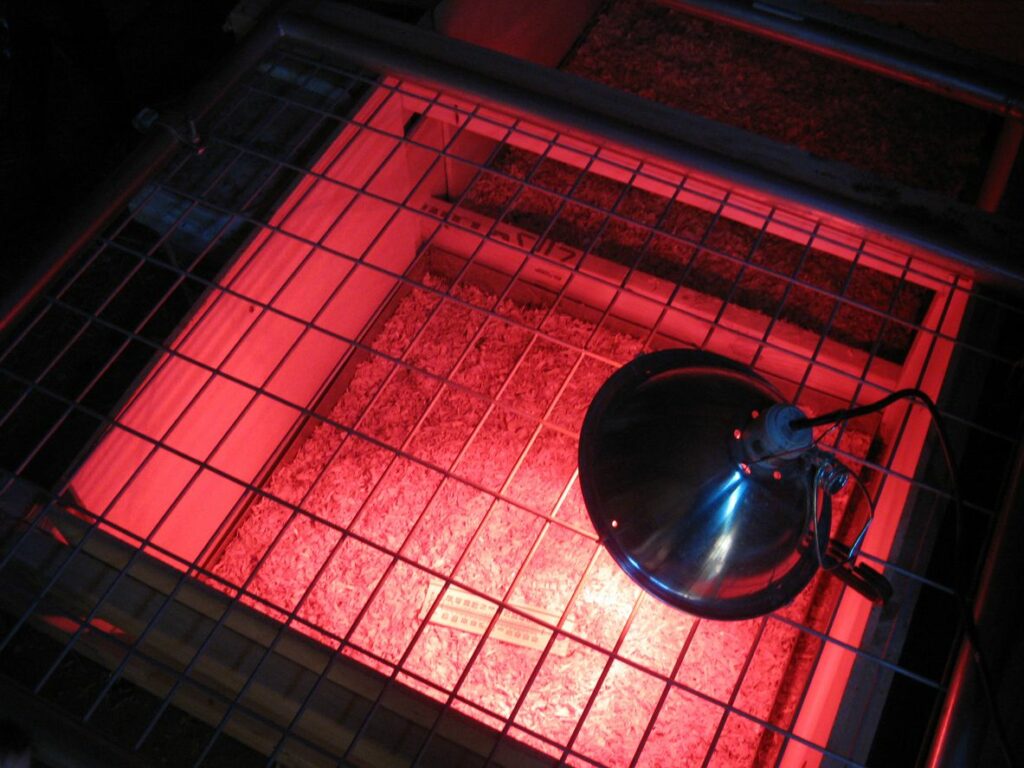
The size of a brooding house for chicks can vary greatly, but most keepers use two different ones for chicks of different sizes.
A container that’s 12 inches tall with 6 square inches of space per chick is the ideal chicken brooder size for most chicks under four weeks old. Then, a 24-inch-tall enclosure with a square foot of space per bird is perfect for older chicks.
However, if you don’t want to have two brooders, you can choose to only use the large chick brooder from the start. The exact size of the brooder for chicks can vary based on the chicken species you’re caring for.
Where Should You Put Your Chicken Brooder Box?
The best place to keep your baby chick brooder is somewhere that retains heat well and keeps them safe from danger. Thus, an outdoor chicken brooder isn’t always safe because it could get cold air into the brooder and make the chicks exposed to predators. An indoor chicken brooder is easier to manage.
Some common places to keep a chicken brooder include a barn, garage, workshop, basement, or even your house. Putting a cover over the brooder is a great way to help the heat stay inside. It should be in a place that’s easily accessible because you’ll want to check on your chicks a few times each day.
If you choose to keep the brooder inside your home, make sure it’s secure enough that pets and children can’t get to the chicks. A cover on the brooder will also keep curious chicks from escaping.
The place you keep the brooding pen for chicks should be no colder than 50º F (10º C). Warmer areas make it easier to keep the chick’s space warm.
How to Stop a Chicken from Brooding
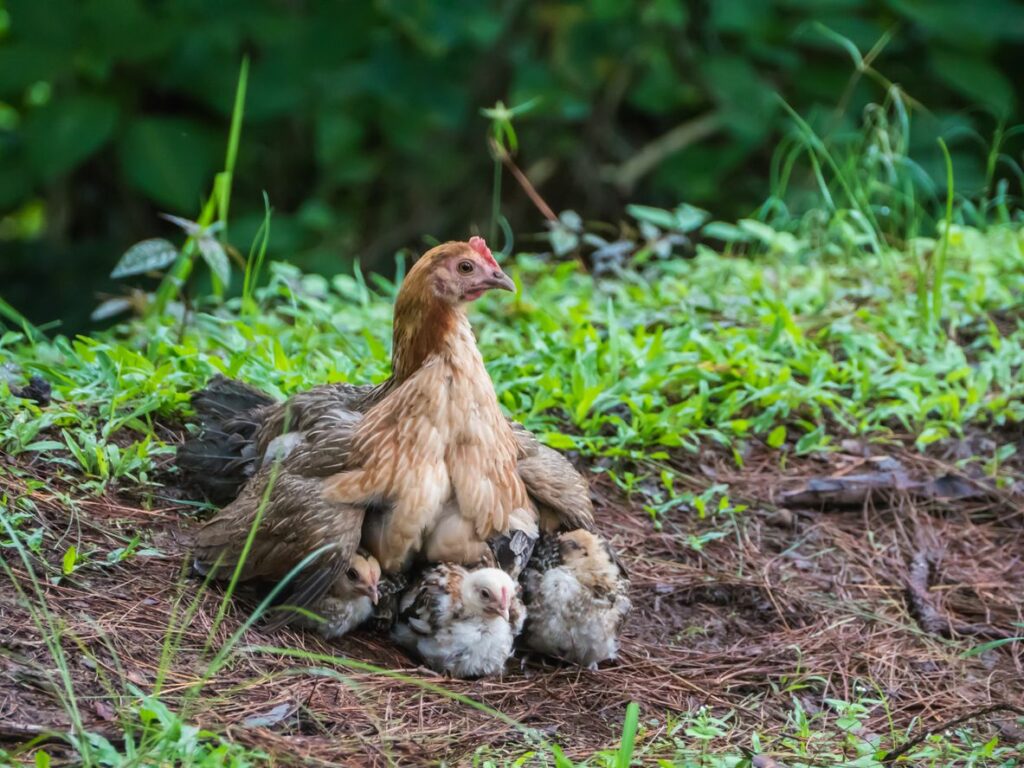
If you want to keep your chicks in a brooder, a broody hen might make that difficult. Some ways to prevent broodiness include taking the eggs shortly after they’re laid or restricting access from the nesting box after eggs are laid.
However, it can be difficult to know exactly when hens will lay, and even if you do, you might not be able to collect the eggs right away. So, you might be better off caring for breeds that aren’t prone to broodiness.
How to Make A DIY Chick Brooder
Setting up a chicken brooder isn’t difficult, so it’s up to you to decide if you want to take extra time to build your own.
You can buy a commercial chick brooder or a chicken brooder kit, but it’s not hard to make one yourself. Many chicken keepers prefer a DIY chick brooder box because it allows more customization to your flock’s specific needs. So, here are some chick brooder ideas to help you create your own.
Choosing a Container
The first part of baby chick brooder setup is choosing a container to keep your chicks in. Some options to consider include a cardboard box, a rabbit hutch, or even a bathtub. The chicken brooder design isn’t as important as its practicality.
A cardboard box is one of the best cheap chick brooder ideas. It’s easy to set up, and when you want to expand your brooder, you can combine it with a second box by adding openings and taping the two together. Yet, there are some downsides when it comes to your chicks’ health. The cardboard could pose a fire hazard, and it may retain too much fluid from feces.
Rabbit hutches are great for chicken brooders if you have access to one. They can easily be cleaned and re-used as needed. However, you may need to put cardboard along the lower edges to prevent chicks from pushing their bedding through the holes.
If you have an extra bathtub that you’re not using, it can be a cheap chicken brooder area if it’s the right size. You’ll need to ensure that you put down grippy padding on the bottom to prevent chicks from slipping. Also, the tub will need to be cleaned very thoroughly once the chicks grow up.
The best chicken brooder container depends on what materials you have access to and how many chicks you have. Cleaning chick brooder containers can be a tedious process, so make sure the container is easy to manage.
The Best Flooring/Bedding
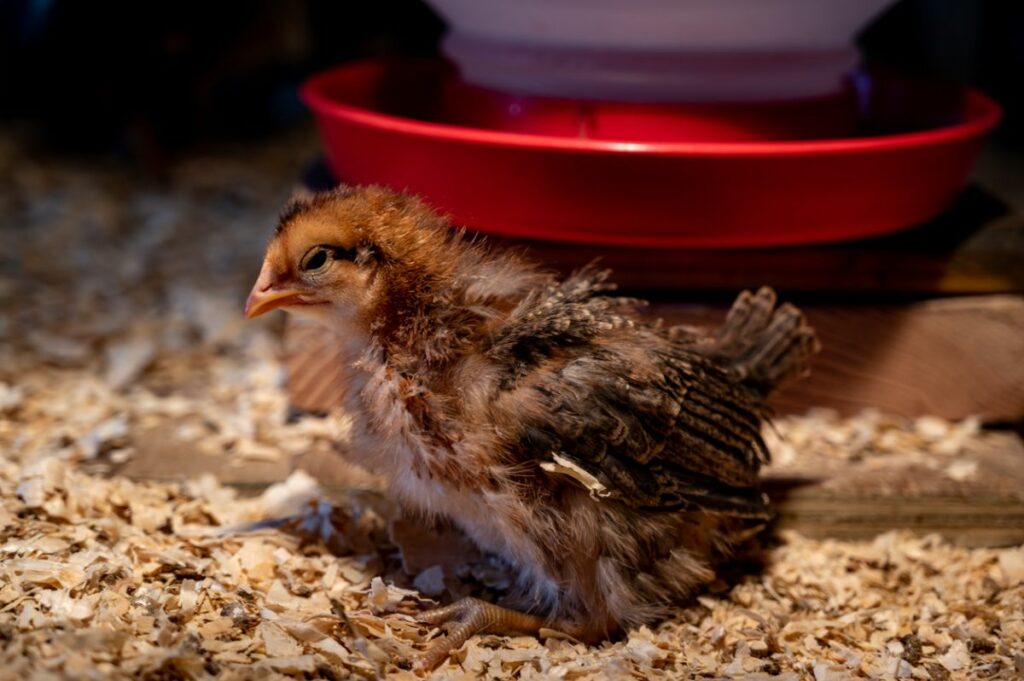
Whatever bedding you choose must prevent chicks from slipping. If their little legs don’t have something to grip onto, they can suffer from splayed leg. Splayed leg can be healed and easily managed, but it’s still a good idea to prevent it.
Your first instinct may be to use newspaper, but you should avoid using that as the bottom layer. Newspaper is too slippery, so instead, lay down some high-traction padding first. Shelf liner is an easy option, and you might also find some similar products at the pet store.
Once you put down a no-slip surface, you can place softer bedding on top of it. Paper towels or pine shavings for chicken brooder containers are some options that keepers use.
Adding a Heater
The most important part of a brooder is that it’s warm enough for the chicks, so you’ll need a chick brooder heater. A heated chicken brooder lamp is a great way to provide warmth and light to the chicks. Instead of using a standard heat lamp, choose one that’s made specifically for brooding chicks since it’ll be less likely to pose a fire risk.
A chick brooder heater plate may be a safer alternative to a heat lamp. However, a chick brooder heating plate usually doesn’t have a light like a heat lamp would, so you’ll have to find another way to provide light in the space. There are some chicken brooder light options that don’t emit heat.
Setting the Temperature
When you put newborn chicks in the brooder, you should start with a chick brooder temperature of about 95º F (35º C). That’s the ideal temperature for chicken brooder containers, but if the temperature is slightly higher or lower, your chicks will still be safe.
Over time, you can slowly decrease the chicks brooding temperature by about five degrees per week until the brooder reaches room temperature. This will help chicks eventually transition to life outside the brooder. To keep track of the baby chick brooder temperature, you’ll need to purchase a thermometer for chicken brooder.
Providing Food and Water
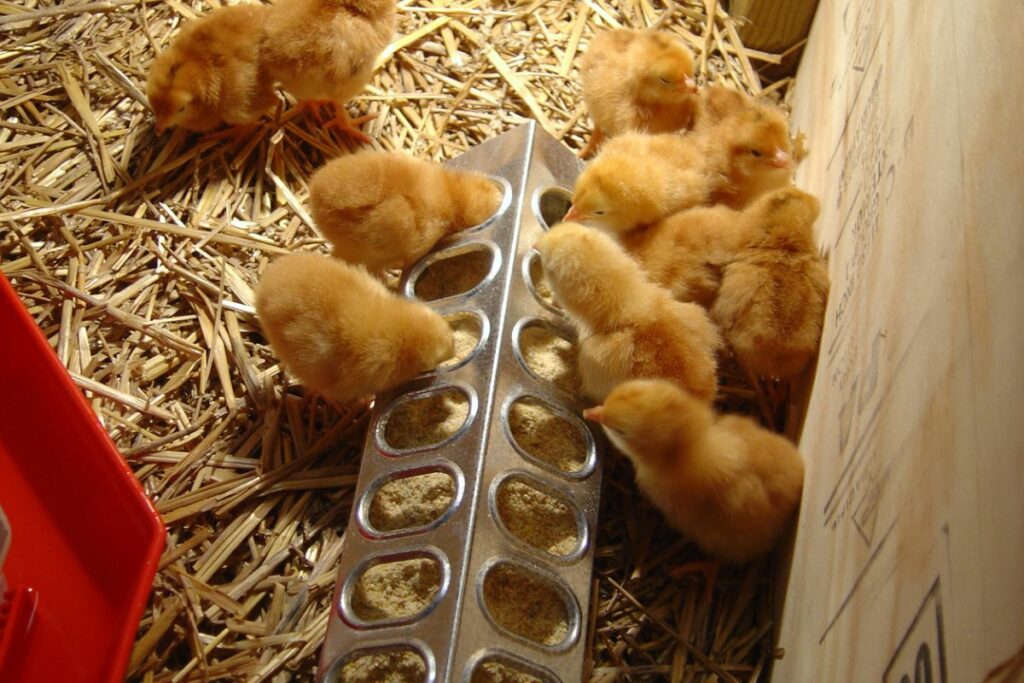
Once the brooder is all set up, you’ll need to make sure there’s food and water for your birds. Your chicks should have clean water accessible to them at all times. They will instinctively drink it without you needing to do anything.
Chicks need a feed that’s formulated specifically for their age. Since they’re still growing, they need more protein than an adult hen would. Most chick feeds start at 20% to 24% protein. Then, as the birds age, you can transition them to feeds with less protein, likely somewhere between 15% and 18%.
Automatic food and water containers are usually the easiest for chicken keepers to manage. Keeping the dishes in the corners of the brooder is a way to limit the amount of feces that ends up in the food and water. Even with automatic feeders, you’ll still need to clean and refill the containers regularly to make sure they stay safe.
How to Transition Chicks from Brooder to Coop
Once your chicks are old enough, you can start transitioning them from the brooder to an outdoor space. Start slow by giving them only an hour of outdoor time on their first day. Then, increase their time each day until they seem fine being outside for five to six hours at a time. Then, they’re likely ready to spend all their time outside and explore on their own.
Frequently Asked Questions
Before you gather the supplies for your chicken brooder, you may have some lingering questions. Here are a few things that new chicken keepers commonly wonder.
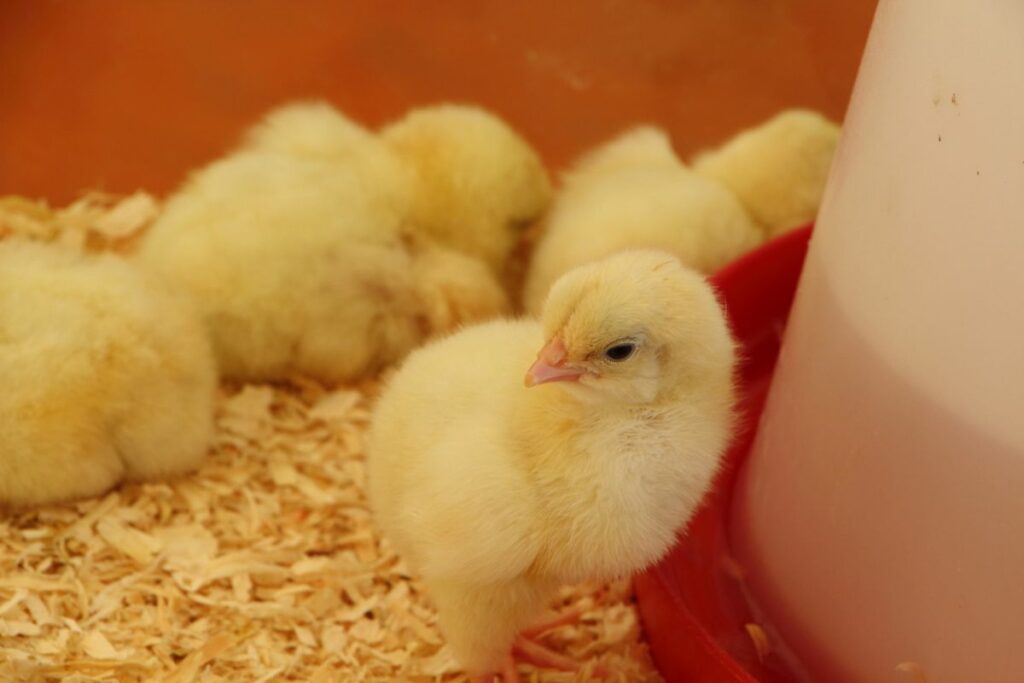
Most chicks need to stay in a brooder for at least six weeks, but it depends on the breed. Once most of their juvenile feathers have developed, they’re ready to head to an adult enclosure. This age is referred to as the pullet stage. Knowing when to take chicks out of brooder boxes depends on how quickly your chicks are developing.
A brooding space for chicks usually houses about ten to fifteen chicks at one time. However, it depends on the size of the brooder and the chicks. You can house as many chicks as you’d like as long as they each get six square inches of space at first. Yet, the bigger they get, the more space each individual chick will need.
Creating a Comfortable Chicken Brooder
Creating a cozy chicken brooder is the best way to ensure that chicks stay comfortable as they grow. If you’re planning on creating a homemade brooder for chicks, consider what container, bedding, and heating you’re going to use. This environment can determine how healthy your chicks will be.
Of course, if you’re not planning to raise chicks any time soon, then there’s no need for building a chicken brooder. Just make sure you keep your hens separated from roosters to ensure that no unwanted chicks appear.
